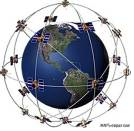题目内容
11.Enjoy a museum visit with your classAvailable Programs:
Art Tells a Story:By looking at the subject matter and by drawing from personal experiences,students can find the story in some works of art.( All grades)
Learning to Look:An interactive(互动的)tour that explores a variety of art using storytelling,movements,music,games,and other techniques helps introduce children to a museum.(Preschool~Grade 3)
Native American Collection:This program explores relationships that exist between art,culture,the geographic location and natural resources.Students will see a bowl made by Maria Martinez,a Towa storyteller,a Northwest coast mask,and Inuit clothing.( For Grades 2~5)
The Language of Art:Classes are welcomed into the museum to take part in an interactive tour of American Art.It gives participants a new set of vocabulary while helping them feel comfortable.
Art-on-the-Move:Teachers may borrow suitcases filled with art objects.Free organizations with Education Membership.
Planning Your Visit:
Booking:Booking is necessary for all tours and programs.Please book at least a week in advance.Teachers are encouraged to organize self-guided visits for their classes during public hours.
Tour Hours:Tours can be organized between 9:30 a.m.and 5:00 p.m.on weekdays.
Program Fees:Tours are free for those with Education Membership.There is a charge of 6perstudentofnon-memberorganizations.Tourwithartactivitiescost12 per student (non-members) or 10perstudent(members).Chaperones(保护人):Werequireoneadultchaperoneforevery10children.Chaperoneshelptomakeyourmuseumvisitasuccess.Achaperonemustpay5 admission.
Lunch:We regret that no lunch facilities are available at the museum.
Museum Rules:Don't touch works of art.Don't take photographs.
Ask questions.Look,and then LOOK again!
Enjoy!
21.If teachers want their students to learn about what a museum is,they will chooseB.
A.Art Tells a Story.
B.Learning to Look.
C.The Language of Art.
D.Native American Collection.
22.How much should the museum charge a class of 60 students with Education Membership for a tour with art?B
A.$600.
B.$630.
C.$720.
D.$750.
23.What do teachers need to do before leading their classes to the museum?A
A.To make bookings ahead of time.
B.To try to get Education Membership.
C.To learn about the history of the museum.
D.To ask for the permission of self-guided visits.
24.In which section of the newspaper does the passage most probably appear?D
A.Health.
B.News.
C.Culture.
D.Advertisement.
分析 本文属于广告类阅读,作者通过这篇文章向我们介绍了作者鼓励学生去参观博物馆,可以通过看艺术品了解它们的故事,了解文化,地理以及自然资源等.
解答 21.B 细节理解题.根据第二段An interactive (互动的)tour that explores a variety of (各种各样的)art using storytelling,movements,music,games,and other techniques helps introduce children to a museum.可知如果老师希望学生了解博物馆是什么,他们会把博物馆介绍给学生,让他们自己看,故选B.
22.B 这是细节理解题.根据Tour with art activities cost 12perstudent(non-members)or10 per student (members).是会员的学生60×10=600;We require one adult chaperone for every 10 children.Chaperones help to make your museum visit a success.A chaperone must pay $5 admission.因为每10个学生有1个监护人,所以60个学生共有6个监护人,一个监护人交5元钱,所以6×5=30;故600+30=630,故选B.
23.A 细节理解题,根据第六段Booking is necessary for all tours and programs.Please book at least a week in advance.可知我们如果想要参观博物馆需要提前一周预定,故选A.
24.D 文章出处题,通读全文可知本文属于关于博物馆介绍的广告,故选D.
点评 考查学生的细节理解和推理判断能力.做细节理解题时一定要找到文章中的原句,和题干进行比较,再做出正确选择.在做推理判断题时不要以个人的主观想象代替文章的事实,要根据文章事实进行合乎逻辑的推理判断.

 名校课堂系列答案
名校课堂系列答案 Imagine the situation.You are driving along a desert or on a mountain.You have no idea where you are.You passed the last house two hours ago.Then your car breaks down.It is night and it is cold.You have no mobile phone.What do you do?Well,next time take a GPS with you.This invention may be able to help you.It is a device which uses satellites to find the user's position.It can find your position to within 20metres.A GPS cannot start your car,but at least you will know where you are.
Imagine the situation.You are driving along a desert or on a mountain.You have no idea where you are.You passed the last house two hours ago.Then your car breaks down.It is night and it is cold.You have no mobile phone.What do you do?Well,next time take a GPS with you.This invention may be able to help you.It is a device which uses satellites to find the user's position.It can find your position to within 20metres.A GPS cannot start your car,but at least you will know where you are.